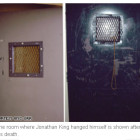Child Sex Abuse Could Lead to Psychosis Later in Life
|
Kids who’ve been sexually abused, particularly if the abuse involved penetration and occurred during early adolescence, are at risk for later developing a psychotic disorder, according to a case-control study done in Australia. The rate of psychotic and schizophrenic illnesses was significantly higher among those who were sexually abused as children. The rate among 2,759 children who experienced abuse was 2.8 percent compared to the control group, which only had 1.4 percent. And for the 1,737 cases where penetration occurred, the rate of subsequent psychosis was 3.4%, according to the November Archives of General Psychiatry. The study, called Schizophrenia and Other Psychotic Disorders in a Cohort of Sexually Abused Children, found that these children have increased risks for several health problems such as depression, anxiety and substance abuse.


